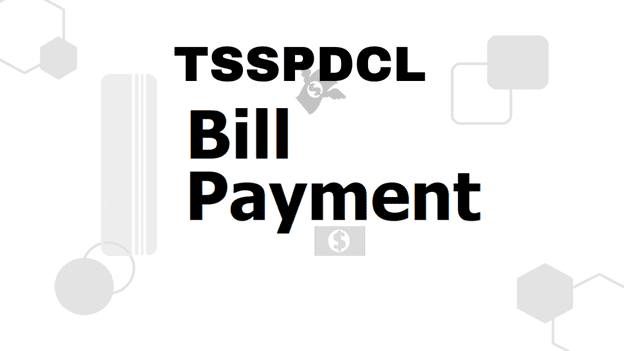TSSPDCL is a power distribution company in the Indian state of Telangana, serving the energy needs of over 9.2 million consumers across five districts. The company’s mission is to provide reliable and affordable power supply to its customers while promoting sustainable energy practices.
In recent years, TSSPDCL has been increasingly focusing on sustainability, recognising the importance of reducing greenhouse gas emissions and adopting renewable energy sources. Here are the five key factors that influence TSSPDCL’s role in sustainable energy management:
1. Government regulations:
One of the key factors that shape TSSPDCL’s sustainability practices is the government regulations that govern the energy sector. For example, under the National Solar Mission, the government aims to achieve a target of 175 GW of installed renewable energy capacity by 2022. This has led TSSPDCL to increase its renewable energy capacity and focus on adopting sustainable energy practices.
TSSPDCL has also been promoting energy conservation practices among its customers, in line with the government’s Energy Conservation Act of 2001. The company offers a range of energy conservation services, such as the replacement of incandescent bulbs with LED lamps, energy-efficient street lighting, and distribution of energy-efficient appliances. This not only helps in reducing energy consumption but also helps customers in lowering their electricity bills.
2. Customer awareness and engagement:
TSSPDCL recognises that customer awareness and engagement are crucial in promoting sustainable energy practices. The company has been actively engaging with its customers on various fronts, including through social media campaigns, bill inserts, and workshops.
Recently, TSSPDCL partnered with the Bharat Bill Payment System (BBPS) platform on Bajaj Finserv. The BBPS platform is a single window bill payment system that allows customers to pay their electricity bills online using multiple channels, such as internet banking, mobile banking, and UPI. The partnership has made TSSPDCL bill payment more convenient for customers and has also helped in reducing the carbon footprint, as customers no longer need to visit TSSPDCL offices to make a payment.
3. Renewable energy adoption:
TSSPDCL has been increasingly focusing on renewable energy adoption, recognising the benefits of reducing greenhouse gas emissions and promoting sustainable energy practices. The company has set a target of achieving 5% of its energy mix from renewable sources by 2022. TSSPDCL has already installed 76 MW of solar power capacity and is in the process of implementing several solar projects in the coming years.
TSSPDCL has also introduced net metering facilities for rooftop solar installations, allowing customers to generate their own electricity and sell any surplus back to the grid. This has not only promoted renewable energy generation but has also helped customers in reducing their electricity bills.
4. Energy efficiency measures:
Energy efficiency measures are another key focus area for TSSPDCL. The company has been promoting energy conservation practices among its customers, such as the replacement of old and inefficient appliances with energy-efficient ones. TSSPDCL has also undertaken several energy efficiency projects, such as the installation of energy-efficient streetlights and smart grid systems.
In addition, TSSPDCL has implemented demand-side management (DSM) programs to incentivize customers to reduce their energy consumption during peak hours. Customers are given incentives for reducing their energy consumption during peak hours, which not only helps in reducing energy consumption but also helps customers in lowering their electricity bills. Furthermore, TSSPDCL encourages customers to take advantage of the online electricity bill payment options to make the bill payment process more convenient and efficient..
5. Technology advancements:
Technology advancements have played a major role in enabling TSSPDCL to adopt sustainable energy practices. The company has implemented advanced metering infrastructure (AMI) systems to monitor its energy consumption more efficiently. The AMI system allows TSSPDCL to track energy consumption in real-time, thereby identifying areas where energy conservation measures can be implemented.
TSSPDCL has also implemented distribution automation systems (DAS) to improve its power distribution infrastructure. The DAS system allows TSSPDCL to manage its distribution network more efficiently, thereby reducing energy losses and improving the reliability of its power supply.
Conclusion:
TSSPDCL’s efforts towards sustainable energy management are an essential step towards achieving a greener, more sustainable future. The company’s focus on renewable energy adoption, energy efficiency measures, customer awareness and engagement, and technology advancements are key factors that drive its sustainability practices.
The partnership with the BBPS platform on Bajaj Finserv has made it more convenient for TSSPDCL customers to pay their electricity bills while also reducing the carbon footprint. Customers can pay their electricity bills online using multiple channels, making the process more seamless and hassle-free.
As we move towards a more sustainable future, TSSPDCL will continue to play a vital role in driving sustainable energy practices and promoting the adoption of renewable energy sources. The company’s efforts towards sustainability will help in reducing greenhouse gas emissions, improving air quality, and promoting a cleaner, more sustainable environment for all.

As the editor of the blog, She curate insightful content that sparks curiosity and fosters learning. With a passion for storytelling and a keen eye for detail, she strive to bring diverse perspectives and engaging narratives to readers, ensuring every piece informs, inspires, and enriches.










